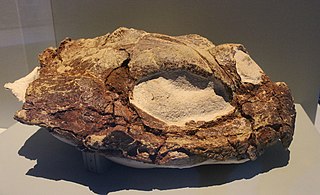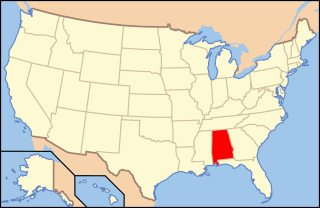
Turtles are reptiles of the order Testudines, characterized by a special shell developed mainly from their ribs. Modern turtles are divided into two major groups, the Pleurodira and Cryptodira, which differ in the way the head retracts. There are 360 living and recently extinct species of turtles, including land-dwelling tortoises and freshwater terrapins. They are found on most continents, some islands and, in the case of sea turtles, much of the ocean. Like other amniotes they breathe air and do not lay eggs underwater, although many species live in or around water.

Sea turtles, sometimes called marine turtles, are reptiles of the order Testudines and of the suborder Cryptodira. The seven existing species of sea turtles are the flatback, green, hawksbill, leatherback, loggerhead, Kemp's ridley, and olive ridley. Six of the seven sea turtle species, all but the flatback, are present in U.S. waters, and are listed as endangered and/or threatened under the Endangered Species Act. All but the flatback turtle are listed as threatened with extinction globally on the IUCN Red List of Threatened Species. The flatback turtle is found only in the waters of Australia, Papua New Guinea, and Indonesia.

The leatherback sea turtle, sometimes called the lute turtle, leathery turtle or simply the luth, is the largest of all living turtles and the heaviest non-crocodilian reptile, reaching lengths of up to 2.7 metres and weights of 500 kilograms (1,100 lb). It is the only living species in the genus Dermochelys and family Dermochelyidae. It can easily be differentiated from other modern sea turtles by its lack of a bony shell; instead, its carapace is covered by oily flesh and flexible, leather-like skin, for which it is named. Leatherback turtles have a global range, although there are multiple distinct subpopulations. The species as a whole is considered vulnerable, and some of its subpopulations are critically endangered.

Archelon is an extinct marine turtle from the Late Cretaceous, and is the largest turtle ever to have been documented, with the biggest specimen measuring 4.6 m (15 ft) from head to tail and 2.2–3.2 t in body mass. It is known only from the Pierre Shale and has one species, A. ischyros. In the past, the genus also contained A. marshii and A. copei, though these have been reassigned to Protostega and Kansastega, respectively. The genus was named in 1895 by American paleontologist George Reber Wieland based on a skeleton from South Dakota, who placed it into the extinct family Protostegidae. The leatherback sea turtle was once thought to be its closest living relative, but now, Protostegidae is thought to be a completely separate lineage from any living sea turtle.

Dermochelyidae is a family of sea turtles which has seven extinct genera and one extant genus, containing one living species, the leatherback sea turtle. The oldest fossils of the group date to the Late Cretaceous.

Protostega is an extinct genus of sea turtle containing a single species, Protostega gigas. Its fossil remains have been found in the Smoky Hill Chalk formation of western Kansas, time-equivalent beds of the Mooreville Chalk Formation of Alabama and Campanian beds of the Rybushka Formation. Fossil specimens of this species were first collected in 1871, and named by Edward Drinker Cope in 1872. With a total length of 3.9 metres (13 ft), it is the second-largest sea turtle that ever lived, second only to the giant Archelon, and one of the three largest turtle of all time along Archelon and Gigantatypus.

Allopleuron is a genus of extinct sea turtle, which measured 2-to-2.5-metre long in life. The type species is Allopleuron hofmanni. It is a basal member of the clade Pancheloniidae, closely related to Protosphargis. Similar to Protosphargis, it was characterized by shell reduction.

Protostegidae is a family of extinct marine turtles that lived during the Cretaceous period. The family includes some of the largest sea turtles that ever existed. The largest, Archelon, had a head one metre (39 in) long. Like most sea turtles, they had flattened bodies and flippers for front appendages; protostegids had minimal shells like leatherback turtles of modern times.

Sinemys is an extinct genus of turtle from the Late Jurassic to Early Cretaceous of China. Three species have been named: S. lens, the type species, from the Kimmeridgian-Tithonian of Shandong; S. gamera, from the Valanginian-Albian of Nei Mongol, and S. brevispinus from Early Cretaceous of Nei Mongol. S. wuerhoensis, from the Aptian-Albian of Xinjiang, is not referrable to this genus. Specimen that may be belong to this genus were also known from Japan, although later abstract considered it as indeterminate sinemydid. The species S. gamera is noted for the presence of a pair of elongate spines projecting outwards and backwards from seventh costal of the carapace. These may have served a hydrodynamic function.

Psephophorus is an extinct genus of sea turtle that lived from the Oligocene to the Pliocene. Its remains have been found in Europe, Africa, North America, and New Zealand. It was first named by Hermann von Meyer in 1847, and contains seven species, P. polygonus, P. calvertensis, P. eocaenus, P. oregonesis, P. californiensis, P. rupeliensis, P. scaldii, and a species discovered in 1995, P. terrypratchetti.

Toxochelys is an extinct genus of marine turtle from the Late Cretaceous period. It is the most commonly found fossilized turtle species in the Smoky Hill Chalk, in western Kansas.

Notochelone is an extinct genus of sea turtle, which existed about 100 million years ago. The species was first described by Richard Owen in 1882 as Notochelys costata. It was renamed by Richard Lydekker in 1889. It was the most common marine reptile living in the inlands of the sea around Queensland, Australia. It was small turtle with carapace less than 1 metre (3.3 ft). Analytical studies have indicated that the creatures frequently ate benthic molluscs.

Bouliachelys is an extinct genus of sea turtle from Cretaceous Australia. It was originally described as a member of Protostegidae. In 2013 study it was considered to be a member of Dermochelyoidae, although later studies consider it as a protostegid again.

Mesodermochelys is an extinct genus of sea turtle known from the Campanian to the Maastrichtian of what today is Japan and from the Maastrichtian of Chile. One species is known, the type species M. undulatus; it was given its binomial name by Ren Hirayama and Tsutomu Chitoku in 1996. Studies of its skull indicate that it was a primitive member of the Dermochelyidae that was closely related to the Protostegidae. It has been described as the best representative of Mesozoic dermochelyids.
Terlinguachelys fischbecki is an extinct sea turtle that existed during the Late Cretaceous period some 80 million years ago. It is the sole species in the genus Terlinguachelys and is classified in the family Protostegidae along with other extinct marine turtles.

Paleontology in Alabama refers to paleontological research occurring within or conducted by people from the U.S. state of Alabama. Pennsylvanian plant fossils are common, especially around coal mines. During the early Paleozoic, Alabama was at least partially covered by a sea that would end up being home to creatures including brachiopods, bryozoans, corals, and graptolites. During the Devonian the local seas deepened and local wildlife became scarce due to their decreasing oxygen levels.

Ocepechelon is an extinct genus of giant protostegid sea turtle known from the Late Cretaceous of Morocco. The feeding apparatus of Ocepechelon, a bony pipette-like snout, is unique among tetrapods and shares unique convergences with both syngnathid fishes and beaked whales.

The Oulad Abdoun Basin is a phosphate sedimentary basin located in Morocco, near the city of Khouribga. It is the largest in Morocco, comprising 44% of Morocco's phosphate reserves, and at least 26.8 billion tons of phosphate. It is also known as an important site for vertebrate fossils, with deposits ranging from the Late Cretaceous (Cenomanian-Turonian) to the Eocene epoch (Ypresian), a period of about 25 million years.

Rhinochelys is an extinct genus of sea turtles belonging to the family Protostegidae.

Alienochelys is an extinct genus of marine turtle known from Maastrichian-aged Cretaceous phosphates in Morocco. With a skull measuring 41.5 centimetres (1.36 ft) long, it would have been a very large turtle. It was first described as a member of the family Dermochelyidae, meaning that it is a relative of the modern leatherback turtle, though a 2018 study identifies it as a sister taxon of Ocepechelon belonging to the family Protostegidae, indicating that it may have been closer to the extinct Archelon. Unlike other sea turtles, Alienochelys' the jaws being adapted for a powerful crushing pattern well adapted for a durophagous lifestyle, as well as its unusual cranial characteristics.



















